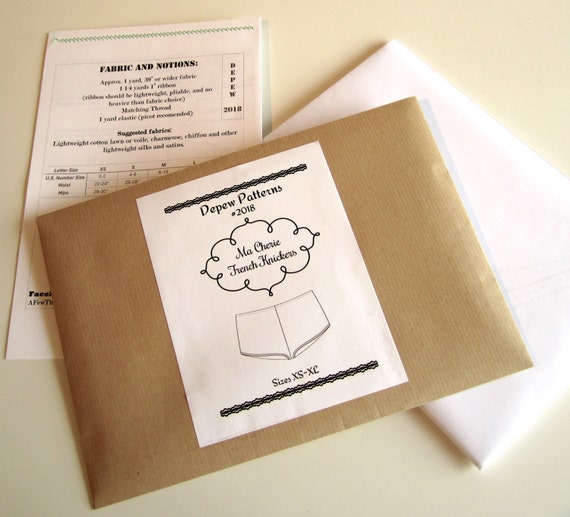Hello lovely readers! Today I was browsing my collection of vintage editions of Le Petit Echo de la Mode and I stumbled upon this lovely fashion spread from 1949 featuring trousseau lingerie and lounge wear.
These designs were once available as mail order sewing patterns (oh, to have such a magazine delivered to your mailbox!). I realized though, as I drooled over these patterns, that I have quite a few similar designs in my shop.
So, I thought I'd share today, how to get the 1949 looks pictured in the magazine using patterns from Mrs. Depew Vintage!
1. Bra in Satin - Easily copied using Depew #2015.
2. Panties with gathered waist - Use Depew #7311A and add allowance to the waist for gathers.
3. Corselet - Use Depew #2003 and add a top-stitch motif to the center front.
4. Basic straight slip - Use Depew #604.
5. Rayon bra with lace trim - Use Depew #352.
6. Corselet with wide lace ruffle - Use Depew #2002 and finish the lower edge with 6" or wider lace trim.
7. Tap pants with gathered side panels - use Depew # 612 and add side panels as cut-outs to the side legs.
8. Slip with ruffle - Use Depew #7314, cut it shorter at the hem and change the neckline as needed.
9. Slip with ruffle and tap pants with ruffled leg. Slip - Use Depew #7314. Tap pants - Use Depew #7314B.
10. Dressing gown - Use Depew #5003.
11. Pajama set - Use Depew #354 or Depew #601.
12. Pink dressing gown - Use Depew #5004 and replace cuffs with lace. Blue nightgown with lace trim - Use Depew #171.
In other sewing news, I was really excited to learn yesterday that Collete Patterns will be releasing a digital sewing magazine starting in December! Seamwork will feature articles, sewing tutorials, and downloadable easy-to-sew sewing patterns. I really enjoy reading the Coletterie blog and I know that the magazine is going to be even better!
 |
| Image courtesy of Seamwork and Collete Patterns. |
To get updates on Seamwork's progress, writers, and patterns, and to be entered to win a full year's worth of patterns in the process, sign up here!
Happy sewing, my darlings...



















